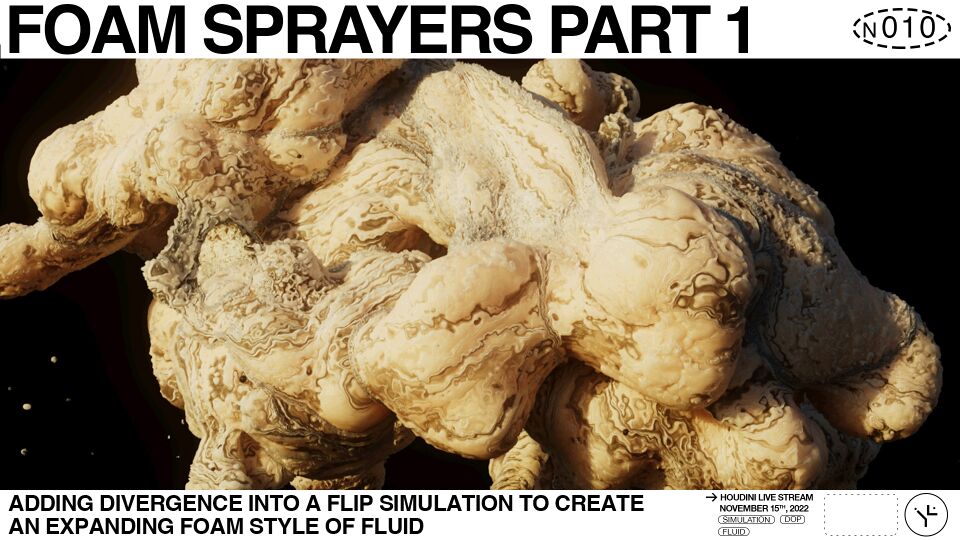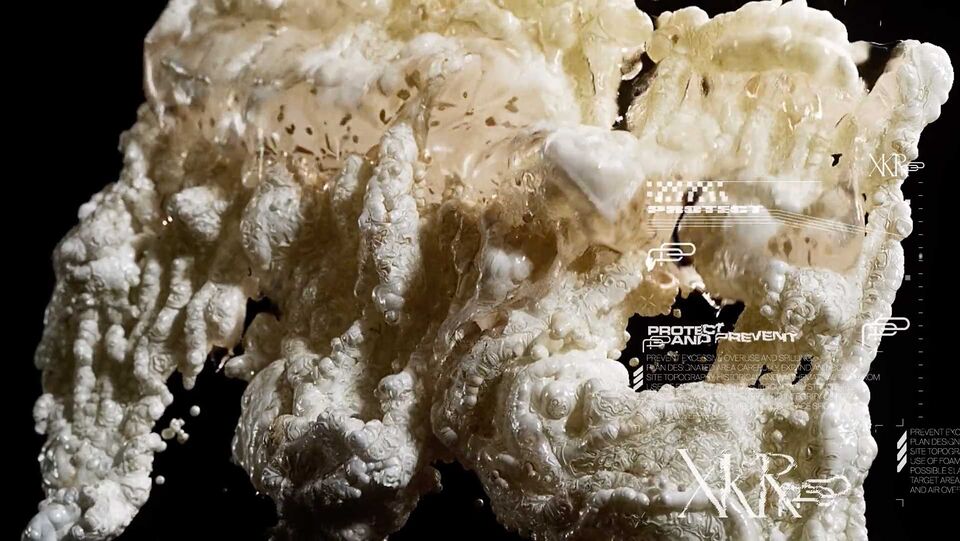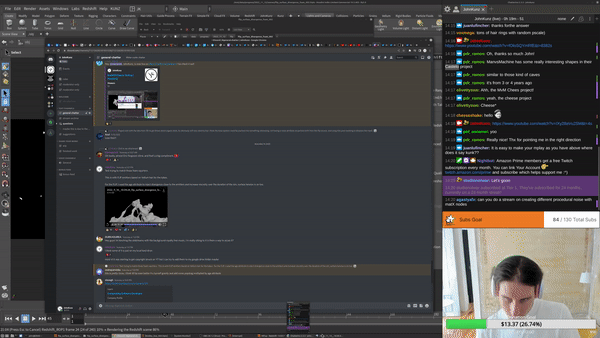Difference between revisions of "Live 2022.11.15"
From kunz
Views
Actions
Namespaces
Variants
Tools
| Line 2: | Line 2: | ||
[[File:content_thumbnail_2022_11_15.jpg | 960px]] | [[File:content_thumbnail_2022_11_15.jpg | 960px]] | ||
== Introduction == | == Introduction == | ||
This was my attempt trying to recreate the foam techniques from [https://xk.studio/XKR_002-PROTECT the amazing PROTECT project from XK Studio]. | |||
[ | [[File:2022_11_15_XK-Studio-XKR_002-Protect3.jpeg | 960px]] | ||
[https://twitter.com/xk_studio/status/1575807058355445760/video/1 XK Studio BTS ] | For more insight in to their process and development, take a look at their video here: [https://twitter.com/xk_studio/status/1575807058355445760/video/1 XK Studio BTS] | ||
Below are some of my results while testing and iterating on simulation settings. | |||
[[File:2022_11_15_foam_settings_flbk.gif| 960px]] | |||
[[File: | |||
= Video On Demand = | = Video On Demand = | ||
Revision as of 14:25, 27 January 2023
Foam Sprayers
Introduction
This was my attempt trying to recreate the foam techniques from the amazing PROTECT project from XK Studio.
For more insight in to their process and development, take a look at their video here: XK Studio BTS
Below are some of my results while testing and iterating on simulation settings.
Video On Demand
- 00:00 Introduction
- 00:50 Flipbook iterations
- 06:10 Scene walkthrough
- 06:30 Vellum wire simulation setup
- 09:50 Setting up the FLIP emission source
- 12:33 Initial velocity for FLIP emission
- 14:10 Procedural noise from rest coordinates
- 15:28 FLIP simulation overview
- 15:50 VEX wrangle to control divergence
- 18:50 Surface tension settings
- 20:35 Post simulation workflow
- 23:10 Visualize shader noise from rest attribute
- 39:10 Visualize age particle attribute
- 44:18 Visualizing divergence in FLIP simulation
- 51:00 Wrapping up and overview


